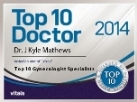Mood and behavior changes that occur prior to the onset of menstruation and resolve after menstruation starts define Premenstrual Syndrome (PMS).
When bothersome symptoms progress to cause significant impairment of normal function, the term Premenstrual Dysphoric Disorder (PMDD) is used. This disorder requires the woman to be ovulatory and for symptoms to occur in the last half (Luteal phase) of the menstrual cycle.
Numerous symptoms may be present including but not limited to Irritability, Depression, Anxiety, Confusion, Poor Concentration, Sleep Disturbances, Abdominal bloating, Headaches, Breast Tenderness, and Social Withdrawal. Many women of reproductive age experience some cyclic menstrually-related symptoms. If symptoms have a negative impact on quality of life, productivity, and/or cause functional impairment treatment is indicated.
There are numerous nonpharmacological, and pharmacological therapies that may be used to treat premenstrual syndrome. Several new oral contraceptive agents and Serotonin Reuptake Inhibitors (SSRIs) have shown to reduce severity of symptoms. Dr. Mathews bases therapy on the individual’s symptoms with consideration of the patient’s age, underlying medical conditions, and reproductive plans.
Therapy is begun with the safest effective intervention that has the lowest side-effect profile. Options include Lifestyle modifications, Dietary modifications, Hormonal, and Pharmacological therapies.











